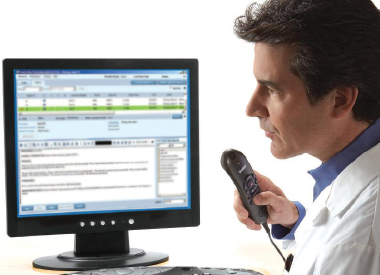SCRIBELINK SUCCESS DERIVES FROM:
- We have firsthand knowledge of the problem, including a Physician CEO on a quest to address a major need in healthcare.
- From the beginning, physicians and engineers worked together in a multidisciplinary team.
- ScribeLink did not try to take the latest technology fad and force it into healthcare. We built a solution based on four years of research, development, and testing


In-person scribes
- Excessive workforce turnover- no one wants to orient a new scribe every several months; plus, no guarantee of quality of the next scribe
- High cost
- Exam room crowding
- One more person for the physician to manage, constantly asking, “Anyone seen the scribe?”

Smart glasses with remote scribes
- Very uncomfortable to wear and poor user experience
- Lack of two-way audio prevents conversation with scribe
- Camera on face diminishes eye contact with patients
- Major technical barriers leading to poor reliability

Fixed room audio – video with remote scribes
- Much of physician thought process and documentation takes place outside the room
- Security concerns of having equipment outside of physician control
- High cost to place equipment in each room

Tablet computer on a rolling stand
- Does a physician really want to pull a rolling stand around for 10 hours a day?

Artificial intelligence companies
- Record and store patient visit. How long before hackers breach and release?
- Computers cannot determine what dialogue is important for the note; these companies still heavily rely on humans editing
- AI cannot pick up non-verbal cues or document physical exams or procedures by visualization.
- Stand-alone AI for medical documentation decades away
- Dr. Gary Marcus has authored a great article on the limitations of artificial intelligence

Voice dictation and Dragon Dictation
- Not in real-time so physician often falls behind on dictations and has to use their personal time to complete
- Dragon Dictation, due to need for frequent editing, often takes longer than direct physician data entry.
- Voice only dictation not in structured format so billing becomes difficult.
